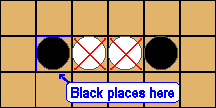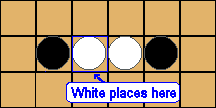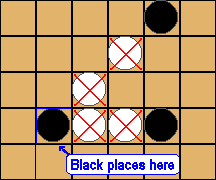|
Pente Help | |||||||||||
DescriptionThis rules/instructions page covers straight Pente. Here at Pocket-Monkey, we also have Pro Pente, Keryo-Pente, and Pro Keryo-Pente. InstructionsObjectiveGet five or more stones (pieces) in a row horizontally, vertically, or diagonally; or capture 10 (or more) of your opponent's stones.Rules
|
| • | • | |||
 |
• |
|
||



